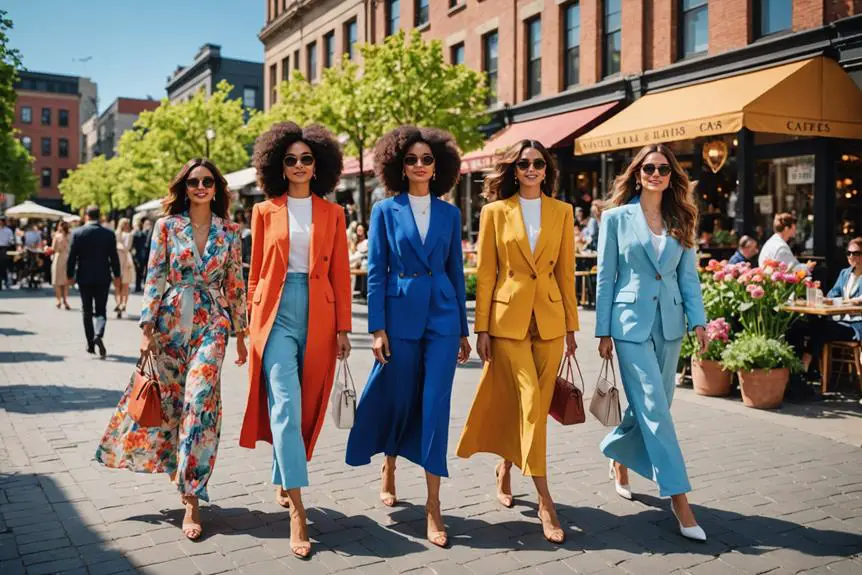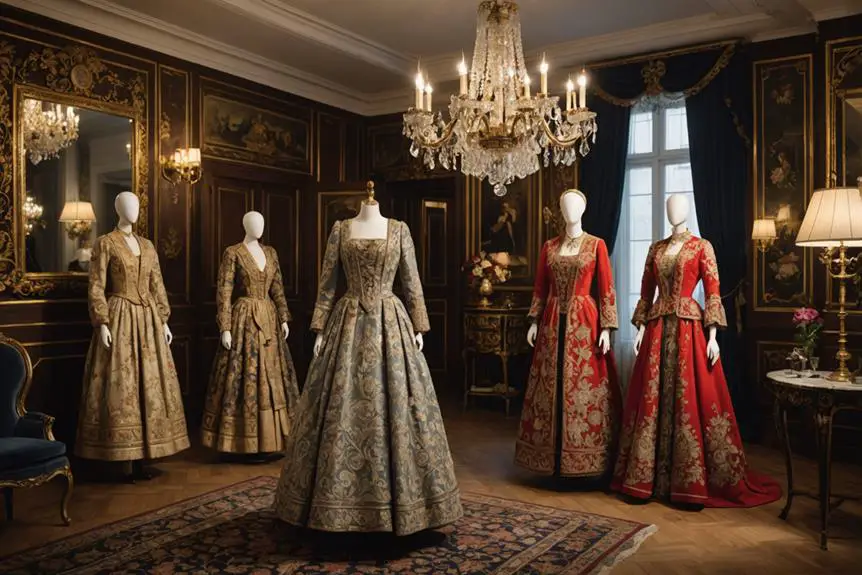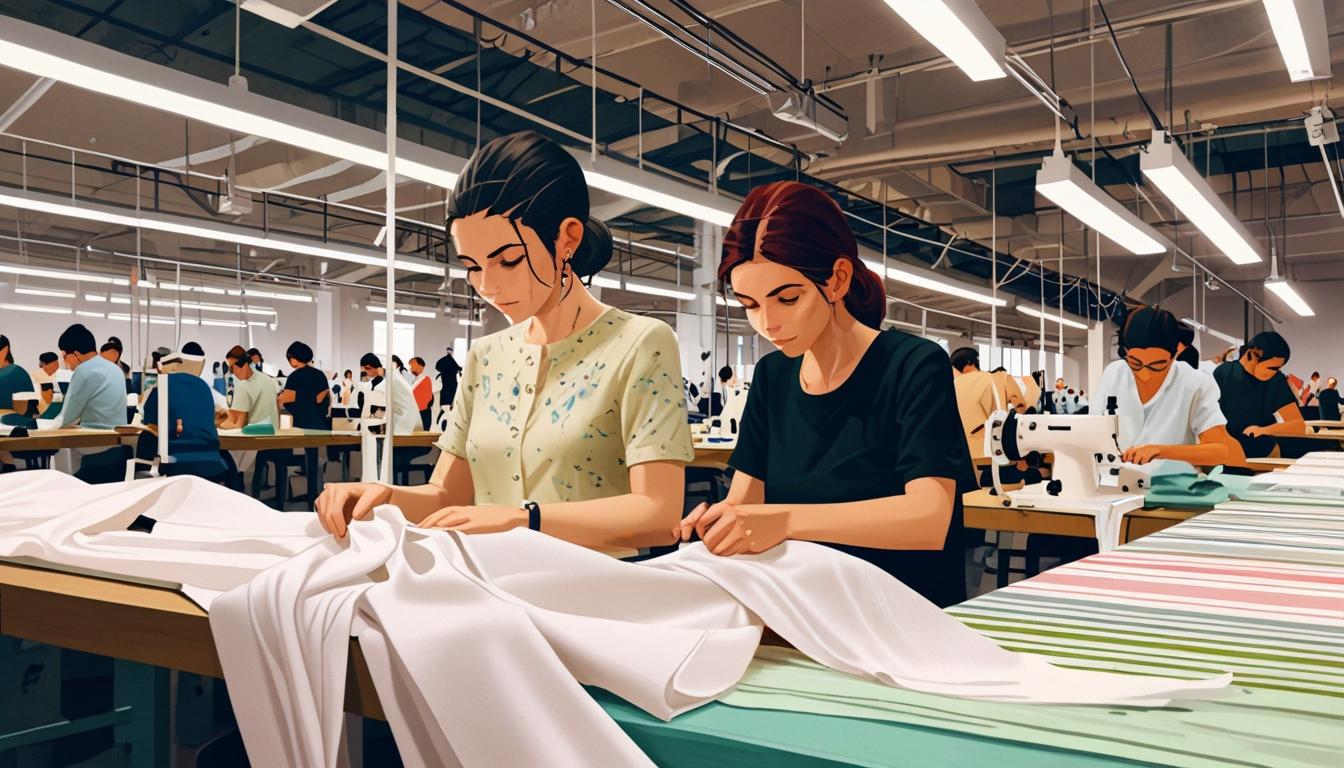Picture yourself stepping into a bustling mall in the early 2000s, with the sounds of pop music echoing around you and the vibrant colors of low-rise jeans and crop tops surrounding you. You can't help but notice how fashion became a playground of casual yet edgy styles, where brands like Abercrombie & Fitch reigned supreme. As you reflect on those trends, you might wonder how cultural icons shaped this era and what it reveals about today's fashion landscape. The complexity of these influences raises questions worth exploring.
Key Trends of the 2000s
The 2000s brought a whirlwind of fashion trends that defined a generation. If you think about women's clothing from this era, low-rise jeans probably pop into your mind first. These hip-hugging beauties, often paired with crop tops, became the go-to look for young women everywhere. You couldn't walk down the street without spotting someone rocking this combo! This era also saw a resurgence of vintage styles, with brands like Adidas making a significant impact through their retro designs and iconic logos, particularly the vintage Adidas logos that appealed to fashion enthusiasts.
But it wasn't just about the jeans. Logos were everywhere! Brands like Abercrombie & Fitch and Hollister made sure their names were on full display, and you knew it was all about that visible branding. Fast fashion also took off during this decade, making it super easy and affordable for you to grab the latest runway styles without breaking the bank. Your closet probably got a serious upgrade!
Accessories played a huge role too. Oversized sunglasses, trucker hats, and layered necklaces were must-haves that completed your trendy look. You could see celebrities and influencers sporting these pieces, which made you want to do the same!
And let's not forget about the return of retro vibes. Bohemian dresses and punk-inspired outfits made a comeback, proving that style is all about mixing the old with the new. So, whether you were channeling your inner rockstar or flower child, the 2000s had something for everyone. What's your favorite trend from this colorful decade?
Iconic Fashion Items
While the 2000s were all about bold trends and playful styles, some fashion items have stood the test of time, solidifying their status as icons in women's wardrobes. Let's kick things off with the Little Black Dress (LBD). Popularized by Coco Chanel in the 1920s, it's the ultimate symbol of elegance and versatility. You can dress it up for a fancy dinner or keep it casual for a day out with friends—what's not to love? The enduring appeal of classic styles can be likened to the timeless quality found in vintage Ralph Lauren pieces, which showcase exceptional craftsmanship.
Next up are high-waisted jeans. They shot to fame in the 1980s and are back with a vengeance! These jeans hug your waist and elongate your legs, making them a flattering choice for everyone. Pair them with a cozy sweater or a cute crop top, and you're golden.
Don't forget the classic white button-up shirt. This wardrobe essential has transformed from a masculine staple to a must-have clothing item for every occasion. It's perfect for both casual and formal looks, making it incredibly versatile.
Ankle boots? Yeah, they're a game-changer! First introduced in the 19th century, they seamlessly shift from day to night and go well with almost any outfit. And let's not overlook the trench coat, originally designed for military use but now a chic outerwear piece that can elevate any ensemble.
Influential Celebrities and Styles
In the world of 2000s women's fashion, influential celebrities like Rihanna and Beyoncé have played pivotal roles in shaping trends and setting new standards for style. You can't scroll through Instagram without seeing their iconic outfits, right? Whether it's Rihanna's daring red carpet looks or Beyoncé's fierce stage ensembles, these stars know how to grab attention and inspire fashion trends that fans want to emulate. Their boldness in fashion mirrors the transformative impact of designers like Alexander McQueen on the industry, whose work challenged traditional aesthetics and redefined beauty standards.
But it doesn't stop there! The legendary supermodels of the '90s, like Naomi Campbell and Kate Moss, laid the groundwork for today's chic aesthetic. Their unique styles still resonate, reminding us that glamour never goes out of style. And let's not forget the timeless influence of icons like Audrey Hepburn and Marilyn Monroe. Seriously, can you think of a more classic look than Hepburn's little black dress?
Today, social media has changed the game. Celebrities like Selena Gomez and Kylie Jenner showcase their personal styles, making fashion accessible and relatable for everyone. You can easily recreate their looks with a quick scroll and a little creativity. Plus, with stars like Emma Watson pushing for sustainable fashion, you can rock stylish outfits while being eco-friendly. Isn't that a win-win?
Cultural Impact on Fashion
Fashion isn't just about clothes; it's a reflection of cultural shifts and societal values. Think about it: the style of clothing you wear often tells a story about where you come from and the world around you. Take the 1920s, for example. Women embraced the flapper style, showcasing their newfound freedoms with looser silhouettes and shorter hemlines. It was a bold move against traditional norms! This period also saw a rise in brands like LL Bean, which began to shape American outdoor fashion and functionality, emphasizing practicality in design vintage logo identification.
Then, fast forward to the 1930s when the Great Depression hit. Suddenly, practicality ruled the fashion scene. Women chose styles that were budget-friendly and functional, proving that you can look good without breaking the bank.
World War II brought another change. With fabric shortages, military-inspired styles and utility clothing became popular. Women had to get creative, making the most out of what they had. Isn't it fascinating how fashion adapts to challenges?
Throughout the decades, the rise of women's rights movements sparked expressive and liberated styles, reflecting a society that was ready for change. Every time you pick out an outfit, remember that your choices are part of a bigger story.
Evolution of Accessories
Accessories have come a long way, evolving alongside women's fashion to reflect changing societal norms and personal expressions. From ornate Victorian handbags to the sleek, functional styles we rock today, each era tells a story. Remember when gloves and hats were must-haves? They screamed social status back in the early 1900s! But by the 1920s, fashion took a fun turn, and accessories became more playful and expressive.
Fast forward to the 1940s, when wartime inspired a whole new vibe with military-style brooches and utility bags. After the war, elegance made a comeback, and luxurious materials took center stage in accessories. Then, in the 1960s, ready-to-wear fashion changed the game, making statement pieces like oversized sunglasses and bold jewelry available to everyone. No more waiting for high-fashion exclusivity!
Today, accessories aren't just about looks; they reflect our values, too. With Sustainable Innovation leading the charge, many brands focus on eco-friendly materials and ethical production. Isn't that amazing? You can look fabulous while making a difference!
Here's a quick recap of the evolution of accessories:
- Victorian Elegance: Ornate designs that showcased status.
- Playful 1920s: Fun accessories that encouraged self-expression.
- Utility in War: Practical pieces born from necessity.
- Eco-Friendly Today: Sustainable choices that care for our planet.
Frequently Asked Questions
What Is a Women's Size S?
A women's size S typically corresponds to a numerical size of 4-6. To guarantee the best fit, you should always consult the size chart, as measurements can vary between different brands and styles.
What Has Happened to M&S Clothing?
M&S Clothing's embraced fashion evolution, modernizing its lines and collaborating with designers. You'll appreciate their focus on sustainability, online shopping enhancements, and revamped store layouts, which cater to diverse consumer preferences while maintaining brand heritage.
What Is the SS Season in Fashion?
The SS season in fashion brings vibrant colors and lighter fabrics. You'll notice season trends like floral patterns and breathable materials, perfect for warmer weather, making it ideal for versatile outfits that shift effortlessly from day to night.
What Does S CH Mean in Women's Clothing?
Imagine browsing a vibrant online store, spotting "S CH" on a dress tag. It means "Small China." Always check the size guide to guarantee it fits perfectly, avoiding that dreaded tight feeling when you try it on.




